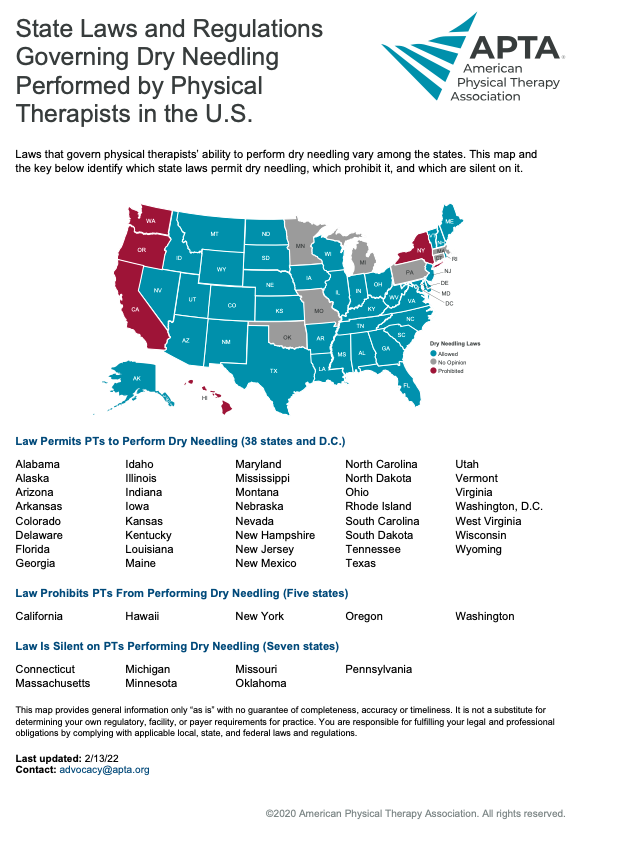 1st Jun 2023
1st Jun 2023
Dry Needling Buyer's Guide: Purpose, Treatment and Recommended Needle Sizes
Dry Needling is a modern treatment designed to ease muscular pain. Its popularity is growing due to its effectiveness in treating various muscle, joint, and nerve pains. The process involves "dry" needles (no medication or injection) inserted into the skin and muscle directly at a myofascial trigger point - these are hard knots within a muscle that can be felt under the skin and cause pain over a large area.
Who Can Benefit from Dry Needling Therapy
Dry Needling can be beneficial to a wide range of conditions. Most commonly, those who experience musculoskeletal pain, including athletes, office workers, manual laborers, and more can benefit from Dry Needling. It's also helpful for individuals with chronic conditions that cause pain and muscle tension.
What Medical or Health Conditions Can be Treated with Dry Needling
Dry Needling can help manage and alleviate pain and improve range of motion that may be related to:
- Tendonitis
- Osteoarthritis
- Migraines
- Sciatica
- Muscular strains or sprains
- Carpal tunnel syndrome
- Fibromyalgia
Understanding
the Different Needle Sizes Used in Dry Needling
The needles used for dry needling vary in length and diameter, designed to stimulate different types of muscle and tissue depths. Needle sizes can range from 0.16mm x 25mm to 0.30mm x 60mm. In general, shorter and thinner needles are typically used for superficial treatment, while longer and thicker needles are used for deeper muscle layers. Specifically:
- 0.16mm
x 25mm
: These needles are generally
used for more delicate areas like the hands, feet, and face, or
superficial muscles.
- 0.20mm
x 40mm
: These needles are ideal for
treating medium depth muscles, commonly in the arms and lower legs.
- 0.25mm
x 50mm
: These needles are used for
deeper muscles and are typically applied in areas like the upper legs,
back, and hips.
- 0.30mm
x 60mm
: These are the largest needles
and are intended for the deepest muscles and thickest areas of the body
such as the buttocks and shoulder muscles.
| Needle Diameter | Needle Length | Typical Use |
| 0.16mm | 25mm | Superficial muscles, delicate areas |
| 0.20mm | 40mm | Medium depth muscles |
| 0.25mm | 50mm | Deeper muscles |
| 0.30mm | 60mm | Deepest muscles, thick muscle areas |
Sources: https://structureandfunction.net/6-types-of-dry-needling-and-how-to-choose-the-right-one/
How
Effective is Dry Needling
Dry needling is considered an effective treatment for acute and chronic pain, rehabilitation from injury, and even pain and injury prevention, with very few side effects. However, it should be noted that effectiveness can vary among individuals, and research shows it is best used in conjunction with other physical therapy treatments for optimal results.
Types of Dry Needling
1.Trigger Point Dry Needling: This is the most widely known and practiced form of dry needling. It involves inserting a needle into a myofascial trigger point—a hyperirritable spot within a muscle that is associated with pain and dysfunction. The goal is to release the trigger point and alleviate pain.
2.Superficial Dry Needling: This technique involves inserting the needle into the superficial layers of the skin or just beneath it. It is typically used to target local pain, musculoskeletal conditions, or to stimulate specific nerves or tissues.
3.Deep Dry Needling: This technique involves inserting the needle deeper into the muscles, tendons, or ligaments to reach deeper trigger points or areas of dysfunction. It may be used to address chronic pain, muscle imbalances, or structural issues.
4.Segmental Dry Needling: This technique focuses on specific spinal segments or dermatomes. The needle is inserted into the muscles or tissues associated with a particular spinal level to address pain or dysfunction related to that segment.
5.Intramuscular Stimulation (IMS): IMS is a form of dry needling that originated in Canada. It involves inserting needles into tight bands of muscle, known as myofascial trigger points, to stimulate a healing response and alleviate pain.
6.Peripheral neuromodulation: refers to a broader category of therapeutic interventions that involve the modulation or modification of peripheral nerves' activity. This can be achieved through various means, including electrical stimulation, chemical agents, or physical interventions. Peripheral neuromodulation techniques aim to influence the signaling of nerves in the periphery to alleviate pain and improve function. There are specific techniques within peripheral neuromodulation that involve the use of needles, such as:
- Electroacupuncture: This technique
combines traditional acupuncture with electrical stimulation applied to the
inserted acupuncture needles. The electrical stimulation enhances the
therapeutic effects of needling by further modulating nerve activity.
- Percutaneous Electrical Nerve Stimulation (PENS): PENS involves the insertion of acupuncture-like needles into specific points along the body. These needles are connected to a device that delivers low-level electrical stimulation to the peripheral nerves, providing pain relief and modulating nerve activity.
7.Periosteal pecking : This technique is when a dry needle is gently tapped against the bone surface to promote healing (Dunning et al., 2018). This method elicits neuroendocrine responses that can be beneficial for individuals experiencing painful symptoms of osteoarthritis, particularly when applied within the joint capsule. Periosteal pecking has been associated with increased production of hyaluronic acid, anti-inflammatory effects, and elevated levels of endogenous opioids, further supporting its effectiveness in knee osteoarthritis management.
Who Can Perform Dry Needling
This is an often-asked question to which there is not a blanket answer. Dry needling is typically performed by qualified physical therapists, occupational therapists, and chiropractors. Laws that govern these healthcare professionals’ ability to legally perform dry needling vary among the states and requires specialized training to ensure safety and effectiveness of the treatment.
Specific to physical therapists, the American Physical Therapy Association (APTA) provides this map and information summary respective to their profession.

Sources: https://structureandfunction.net/6-types-of-dry-needling-and-how-to-choose-the-right-one/





